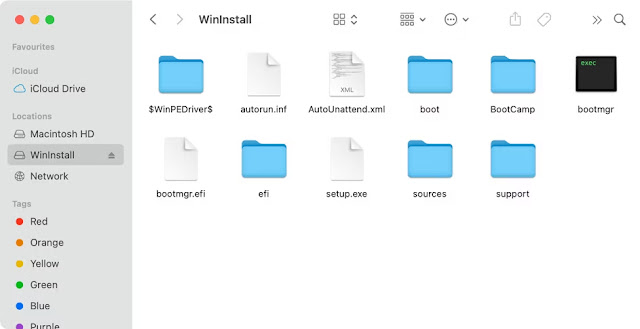Related links
How to Open RAR Files on Android
How to Log Out Of Reddit (Mobile & Desktop)
7 best online job search websites
1. Locating a USB drive on a Mac is typically straightforward, however, if you are unfamiliar with macOS or encounter issues with the drive, you may face difficulties in locating it. In the following steps, we will demonstrate precisely how to locate and access your USB drive on a Mac.
Locate Your USB Drive on the Desktop
Normally, your USB flash drive or external hard drive should appear on your Mac's desktop by default. Simply connect your USB drive and click on the yellow minimize button located in the top-left corner of all open windows to display the macOS desktop.
To access your USB drive using Finder, simply locate the blue smiley face icon on the left side of the Dock and click on it. In case you are unable to see the Dock, move your mouse cursor to the bottom of the screen to make it visible. If this doesn't work, try moving the mouse to the far left or right of your screen if you have customized the Dock's position.
After opening a Finder window, you should be able to see your USB drive in the left sidebar under the Locations heading.
If you still can't find your USB drive, go to Finder > Settings from the menu bar at the top of the screen. Then, click the Sidebar tab and make sure External disks under the Locations heading is enabled.
If the Mac is able to detect your USB drive, doing this should make it appear in the Finder sidebar.
Unable to Access a USB Drive on Your Mac?
If you are unable to locate your USB drive in Finder, it is likely that there is an issue with the drive itself or it is formatted in a way that is incompatible with macOS.
Verify the Format of Your USB Drive
To verify the format of your USB drive, press Cmd + Space to open Spotlight, then type "Disk Utility" and press Return (or Enter) to open the macOS Disk Utility tool. Next, select your USB drive from the sidebar to view the format of the drive displayed below its name.
If your USB drive is formatted in ExFAT, FAT32, APFS, or Mac OS Extended, your Mac should have no issues detecting it. To fix any problems with the drive, click on the First Aid button in Disk Utility and then try accessing it again in Finder.
However, if the USB drive uses Microsoft's NTFS format, your Mac will be able to read it but won't be able to write to it. If you need both read and write support, you can reformat the external drive to an appropriate format using macOS. If reformatting is not an option, you can explore other methods to use an NTFS drive on your Mac.
If your USB flash drive or external hard drive does not appear in Disk Utility, there may be a physical problem with the drive or the USB port on your Mac. Try using a different drive or a different port to troubleshoot the issue.
Alternatively, you can try using the USB drive with a different computer to see if it works there. If it doesn't work on any computer, then the problem is likely with the drive itself and not your Mac.
Ensure that the contents of the drive are compatible with macOS if the USB drive shows up on your Mac but appears empty when it shouldn't be. Not all file types are compatible with macOS, so make sure the files you are trying to transfer are supported.
In some cases, despite trying various solutions, you may still be unable to access your USB drive on a Mac. In such situations, it is often easier to use a different storage method, such as cloud storage, to transfer your data. Choose one of the affordable cloud storage services available, connect your USB drive to a computer that supports it, and upload your files to the cloud. Then, download the files to your Mac from the cloud.






No comments:
Post a Comment